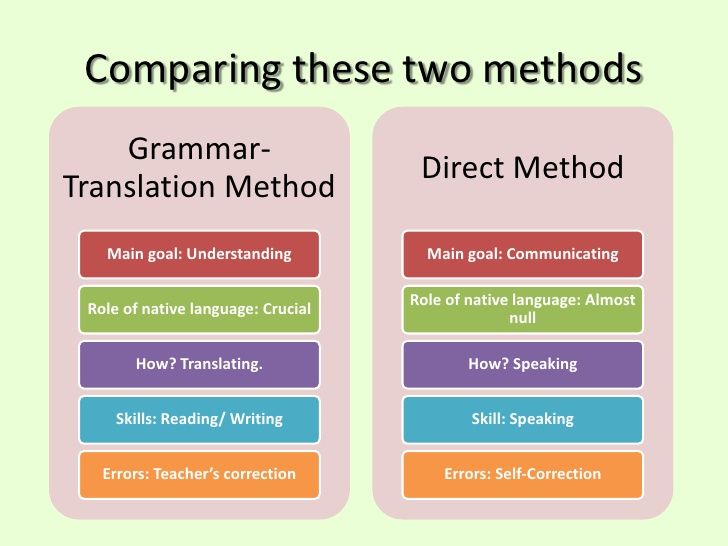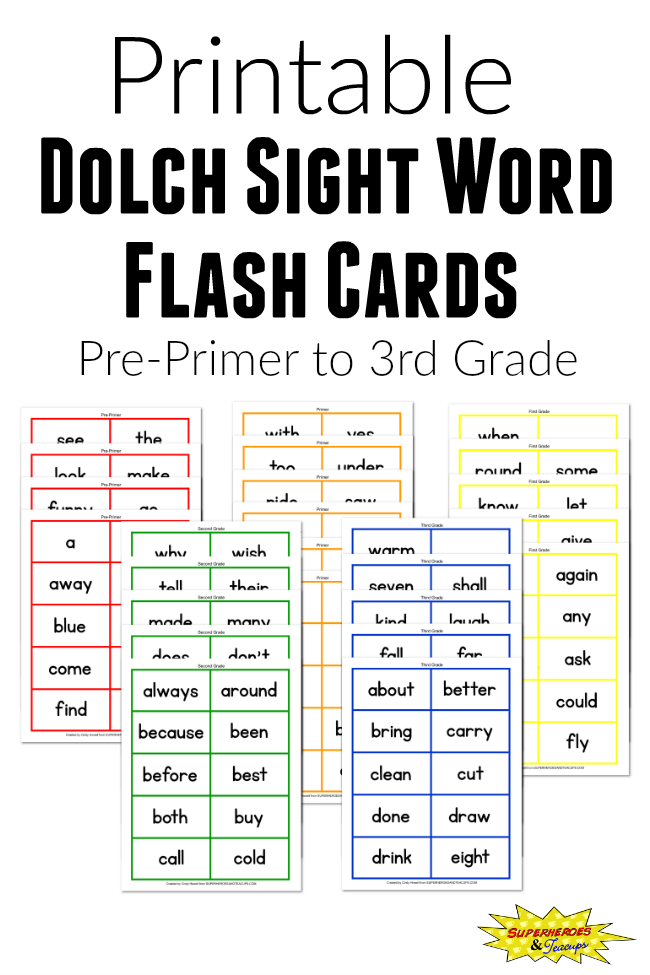Science stories for children
Teaching science through stories - primary
Children’s stories provide a great context for learning science. Explore our resource packages based around popular children’s books and discover the science hidden in a book. Resources include book summaries, hints and tips for teaching the science and further stories on a similar theme.
They are organised into three age groups:
Ages 5-7
Ages 7-9
Ages 9-11
Handa's Surprise
Handa's Surprise would make a great starting point about the needs of living things linked to diet and the specific needs of humans.
Jack and the Beanstalk
The story of Jack and the Beanstalk makes a great starting point for teaching the topic of plants to younger primary aged children.
Little Red Riding Hood
As Little Red Riding Hood is set in a wood, it makes a lovely starting point for finding out about habitats.
Once There were Giants
Support children to understand that all animals, including humans, have offspring which grow into adults.
One Year with Kipper
One Year with Kipper provides a nice link into work on Seasonal Change as children work to observe changes across the four seasons.
RSPB
My First Book of Garden Birds helps to meet the objective to identify and name a variety of common birds.
Tadpole's Promise
Tadpole's Promise is a great story to use when exploring life cycles and helping children to describe the difference in the life cycle of a mammal, an amphibian, an insect and a bird.
The Gruffalo
The Gruffalo can support children to learn more about habitats and to identify and name a variety of plants and animals in different habitats, including micro-habitats.
The Three Little Pigs
Help children to think about identifying different materials and considering what properties they have and how this suits them for different purposes.
Charlie and the Chocolate Factory
Charlie and the Chocolate Factory by Roald Dahl provides a good context to learn about states of matter.
Horrid Henry Rocks
Horrid Henry Rocks is a great book to start teaching about sound and exploring how sounds are made.
The Firework-Maker's Daughter
The Firework-Maker’s Daughter by Philip Pullman is a good starting point for teaching about light.
The Iron Man
The Iron Man is the perfect story to explain how magnets attract or repel each other and attract some material and not others.
The Little Mole Who Knew It Was None of His Business
This funny tale creates a great setting through which children can explore simple functions of the basic parts of the digestive system in humans.
The Pebble In My Pocket
The Pebble In My Pocket tells the dynamic story of rock formation; showing the reader the processes that the pebble goes through from its beginnings in a fiery volcano 480 million years ago.
The Story of Frog Belly Rat Bone
The Story of Frog Belly Rat Bone provides a good setting for investigating plants and their benefits to our environment.
The Vanishing Rainforest
The Vanishing Rainforest by Richard Platt is a good book for looking at the human impact on the environment, in particular deforestation.
Wolves
Wolves is a brilliant setting for constructing and interpreting a variety of food chains, as well as identifying producers, predators and prey.
Beetle Boy
Beetle Boy provides a nice way to link to work on classification of invertebrates.
Charlotte's Web
This is the perfect story to compare the lifecycles of different animals and plants.
Pig-Heart Boy
Pig-Heart Boy provides a good setting for learning about the heart and circulation.
George's Secret Key To The Universe
George's Secret Key to the Universe is a fun read and contains lots of factual sections for help with teaching about the solar system.
Goodnight Mister Tom
This wartime story is ideal for exploring the uses of electricity and how circuits work.
Itch
Itch is an action-backed story in which is great for finding out more about changes of state.
Kensuke's Kingdom
Kensuke’s Kingdom is full of opportunities to explore properties of materials, you can even use the context of survival scenarios linked to the book.
One Smart Fish
One Smart Fish by Christopher Wormell provides a meaningful context for learning about adaptations and evolution.
The Tin Snail
The Tin Snail by Cameron McAllister provides a context for learning about forces and mechanisms, including levers, pulleys and gears.
21 Science Books for Kids
From the wonder toddlers find in a blade of grass to the endless “Why?” curious kids ask everywhere, children are natural-born scientists. Feed that insatiable curiosity with books that teach scientific topics and concepts in a way that kids can relate to.
Whether that’s a book of science experiments for kids to explore with their grownups or easy-to-follow board books about physics, we’re here to say not only will the children get a lot out of these books, adults will too.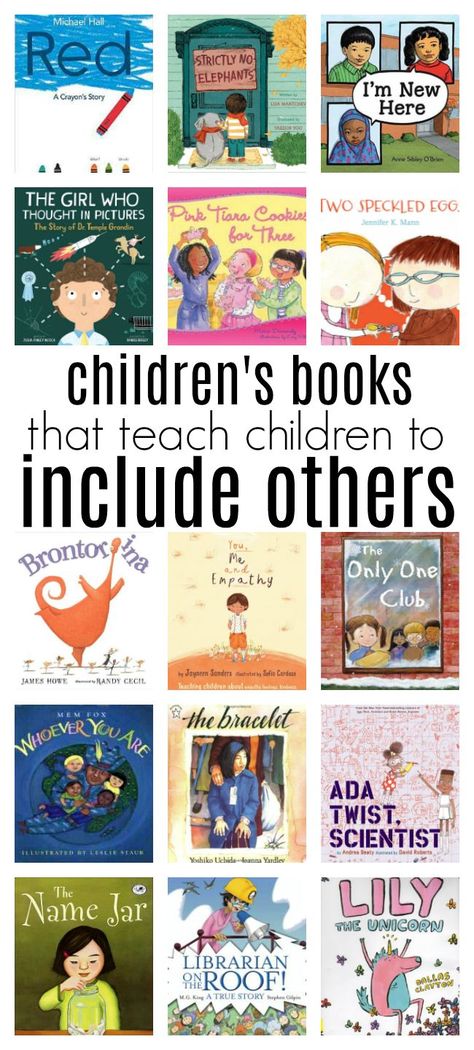 Because you’re never too young, or too old, to learn all about quantum entanglement, right?
Because you’re never too young, or too old, to learn all about quantum entanglement, right?
Nurture their love of the world, and universe, around them by using age-appropriate STEM books for kids to introduce scientific concepts in a way they’ll embrace.
Science books for babies and toddlers
Written by physicist, mathematician and father of four, Chris Ferrie, this little board book is packed with big concepts. But don’t worry, the basics of quantum particles are introduced in a fun and simple way.. Look for other science books in the Baby University series like “Neural Networks for Babies,” “Astrophysics for Babies,” and “Organic Chemistry for Babies.”
This boxed set includes four board books: “Thermodynamics!” “Coding!“, “Aerospace Engineering!,” and “Gravity!” and uses baby-centric language to connect the ideas in a simple but memorable way. Written for scientists aged 1 to 3.
Part of a 30 book series all designed to bring big ideas to baby’s world, this board book brings the beauty of the night sky to bedtime or anytime. Point to the pictures and read along, just don’t be surprised when your little one says the word “moon” one night. Geared toward ages 1 to 3.
Children from 1 to 5 will benefit from this cheerful introduction to botany. Using a flower for each letter of the alphabet, it also enforces reading skills. Bold graphics grace the pages of this sturdy board book, part of a series.
Picture books about science
Written by a bat expert, Fiona is a sweet scaredy-bat when it comes to flying free, but soon she discovers how to see in the dark using her powers of echolocation. Includes information about echolocation in the back of the book along with a “try it yourself” echolocation activity for kids ideal for ages 3 to 7.
Dark pages give way to exquisite animals and other natural phenomena that are bioluminescent in this book that has a gentle, rhyming story thread with lots of scientific tidbits throughout. For kids ages 4 to 8, this book releases November 22.
For kids ages 4 to 8, this book releases November 22.
With die-cut pages and layered illustrations, this introductory anatomy book is full of details that clearly demonstrate various anatomical aspects of the human body, like the skeletal system, organs, and more. In spite of the vast concept, it’s written in a down-to-earth voice that helps engage kids. Though it’s suggested for ages 7 to 10, younger kids will definitely enjoy the imagery and can eventually read it independently when they’re older.
A spin-off nonfiction book on the book “Ada Twist, Scientist“ and the adorable Netflix show, explore botany basics in this scrapbook-like format perfect for early-elementary aged kids, 5 to 8. Look for other fantastic books in the series like “The Science of Baking.”
Although this book is closer to picture-book size and has rooms and sections rather than official chapters, it is a text heavy read perfect for those kids that loved to play doctor when they were little. Ages 7 to 11.
Ages 7 to 11.
Picture this: an expertly written book all about the kingdom of fungi complete with illustrations reminiscent of botanical collections of old. Add to that fascinating facts and an oversized (11 x 14 inches) hardcover format and it truly is a museum-quality book to treasure for years. Plus, if you like this one, collect more in the series including “Botanicum“ and “Anatomicum.” For ages 8 to 12, but even those fungi-loving grown ups out there will adore this book.
Early reader & illustrated chapter books about science
Like it or not, our kids are living through a pandemic and there’s no erasing that. Lots of illustrations and explanations pair up in this timely book that helps kids understand the concept of virology, vaccines, and the science behind why you should cover your nose when you sneeze. Geared toward ages 8 to 12, but frankly we learned a few things ourselves.
There’s only one thing to top that feeling you get when you’ve discovered a book they can’t put down: finding out there are five more in the series. Each book in the series tackles one of the topics on young genius Frank Einstein’s lab board. For example, the first book teaches kids basic tenets of physics like protons and neutrons, book two discusses electricity, and so much more. Written with humor in the vein of “Diary of a Wimpy Kid,” reluctant readers ages 7 to 11 will find this illustrated chapter book series a joy.
Each book in the series tackles one of the topics on young genius Frank Einstein’s lab board. For example, the first book teaches kids basic tenets of physics like protons and neutrons, book two discusses electricity, and so much more. Written with humor in the vein of “Diary of a Wimpy Kid,” reluctant readers ages 7 to 11 will find this illustrated chapter book series a joy.
This Kid Legends series (which includes Kid Authors and Kid Inventors) takes a unique approach to teaching kids scientific history. Instead of giving summarized life stories of famous scientists, author David Stabler writes about pivotal moments in these scientist’s childhood. So instead of learning everything there is to know about Nikola Tesla, for example, kids meet a young Tesla and learn what events as a child led him to become an insatiable electrical engineer and scientist. It helps kids understand the value of their own curiosity, inventions, and trials. Illustrated and fun, it’s truly written with the kids in mind. Ages 8 to 12.
Ages 8 to 12.
A heavily illustrated and highly informative book in the spirit of books like “Goodnight Stories for Rebel Girls,” no list of stem books for kids is complete without a collection that tells the sometimes nearly-forgotten stories of remarkable women in science from Ancient Greece to modern day. Ages 6 to 10.
Geared toward ages 8 to 12, even teenagers will appreciate this book that helps explain all of the elements using a combination of fun descriptions, hard science, and brilliant illustrations. A heavy, hardcover book, this one makes an excellent gift.
Middle grade books about science
This dynamic new series follows Izzy Newton as she and her friends—the Solving Mysteries and Revealing Truth Squad aka the S.M.A.R.T squad—put their clever minds together to solve mysteries around Atom Middle School. The second book, “Izzy Newton and the S.M.A.R.T. Squad: Newton’s Flaw” is hot off the presses in early November and finds the crew facing a mysterious illness threatening to shut down the media center (noooo!) and the school. The series weaves anxieties and obstacles kids face as they navigate middle school with suspenseful mystery and plenty of science.
The series weaves anxieties and obstacles kids face as they navigate middle school with suspenseful mystery and plenty of science.
To understand the premise of this nonfiction book, the first thing to read is the complete title: “The Disappearing Spoon And Other True Tales of Rivalry,Adventure, and the History of the World from the Periodic Table of the Elements.” Adapted from the NY Times bestseller, kids will never roll their eyes at chemistry lessons again. Full of fun facts, silly sidebars, and intriguing stories from history, mythology, and modern day, this book makes a great addition to a teacher’s classroom library or a budding chemistry buff’s bookshelf. Ages 10 and up.
This debut novel by author Christina Li explores a lot of uncharted territory for the middle grade audience. In addition to space exploration, there’s shocking loss, grief, abandonment, and discovery. Two kids who aren’t likely to be friends form a bond when thrown together as lab partners in school when they learn they have more in common than they thought, including the deeply felt absence of their own fathers. Ages 9 and up.
Ages 9 and up.
Science activity books for kids
An activity book that invites curious kids to take the book apart, color in it, cut out pieces, and more, all in the name of learning a wide-range of stem concepts from depth perception to chemistry. Perfect for kids ages 7 to 9, it’s fun and funny and perfect for a rainy day.
If you’re looking for a great gift for a kid or you just want to find a book you’ll love doing with them, pick up this mystery book that delves into scientific methods and concepts as you work to solve the riddles and puzzles within. Written for ages 8 to 12, but younger kids can enjoy it with encouragement and participation. Let older kids lead the discussion and make it a family affair.
The odds are if your kid has ever played Minecraft they already understand what a biome is. Build on that basic concept or start anew (no Minecraft required) with hands-on activities that encourage kids to explore environmental science and learn conservation in a way that makes sense. Geared toward ages 9 to 13.
Geared toward ages 9 to 13.
Science stories for children | Material (junior, middle, senior, preparatory group) on the topic:
The author is a teacher of the SPOAU YaO
"Yaroslavl
industrial and economic
college named after N.P. Pastukhov"
Konovalova N.V.
Collection of children's stories "Scientific stories from the life of animals"
(industrial biochemistry for children)
How animals received strawberry tablets
The hedgehog ran up to the fox and said: "Let's be friends!"
The little fox answered the hedgehog with laughter: “Why should I be friends with you? Your friendship will prick me!”
The hedgehog thought to himself: “How can I make friends with him?”
But suddenly he remembered how much the little fox loves fragrant strawberries and how much he misses them in winter! You can, of course, cook jam from berries, but there was no sugar for this!
And then, the hedgehog decided on an experiment: on the hottest day, the hedgehog, together with the squirrel, dried berries at the ends of thin tree branches. And now, they were already going to take them off.
And now, they were already going to take them off.
Ah! Dried berries crumble, turning into powder! What to do?
And the hedgehog came up with! He and his friends carefully collected all the raspberry powder from the berries and evenly crushed the remaining berries into the same fine powder! They spread the strawberry powder in equal small portions between the fragrant mint leaves, and then, into a rounded depression, which the grinder bugs drilled in the stump especially for this occasion, and asked the strongest bear in the forest to stomp on the leaf from above!
Wow! And it turned out delicious strawberry tablets!
The wise owl watching all this explained that this is how the tablets were obtained as a result of the direct compression method! It turns out that all you need to do is apply pressure!
And what about the friendship between a fox and a hedgehog?
Now, wherever the fox cub goes, there are always delicious strawberry tablets in the pockets of his clothes . .. hedgehog's friend!!!
.. hedgehog's friend!!!
Like a little fox made raspberry syrup
Winter has come in the forest. Everything was covered in white fluffy snow. Beautiful mysterious snowdrifts rose here and there. The hedgehog and the bear cub fell into a deep winter sleep. The fox, of course, did not sleep. He was bored alone in the mink without his hedgehog friend. He often took raspberry pills out of his pocket and recalled his hedgehog friend at the same time. There were very few raspberry pills left, - the little fox understood sadly. But he had water and sugar!
- What if we make raspberry syrup then! - an idea came to the head of the little fox - It only takes a few raspberry pills!
And so, rattling pots, the little fox began to diligently prepare sugar syrup first. He dissolved half a kilogram of sugar in one liter of boiling water, because in real sugar syrup the sugar content should be almost at least half of the volume! I filtered the finished syrup through a cloth, cooled the syrup a little and added raspberry tablets to the hot sugar syrup, stirred until completely dissolved. Oh, what a fragrant raspberry syrup!
Oh, what a fragrant raspberry syrup!
- If only the hedgehog was around now, and I would treat him to my syrup - thought the little fox, finishing his second mug of syrup. - I will definitely leave a few tablets until my friend the hedgehog wakes up ...
How the hedgehog got kefir
The long-awaited spring has come in the forest. The hedgehog woke up after hibernation. The squirrel changed her winter coat for a spring outfit.
Of course, the hedgehog tasted delicious fragrant raspberry syrup, he liked it very much. But after the spring awakening, the hedgehog really wanted kefir. Yes, where can I get it in the forest now, because even before he only managed to drink it from summer residents, and even then when they came to their dachas. And then he remembered the wise owl. Can she help him?
- Yes, I have such a wonderful mushroom. It is called - kefir mushroom! - the owl proudly answered the hedgehog. - From a liter of milk with one tablespoon of kefir mushrooms, you can get a little less than a liter of kefir! You drop kefir fungi directly into a jar of milk and put it in a warm place for a day, and the next day you get kefir! This process is called fermentation of milk to kefir! Take kefir fungi, but just don't forget to treat the animals in the forest!
The hedgehog thanked the owl and merrily went home with kefir fungi. -Now I'll drink plenty of kefir!
-Now I'll drink plenty of kefir!
A week passed, then another, and another. There were so many kefir mushrooms in the hedgehog: after all, when fermenting, they multiply - increase in number - that he simply did not know what to do with so much kefir! After all, he had already treated everyone he could to kefir in the forest.
What if the kefir grains are removed from the milk and gently dried, and then put away until the next use, when they are needed again?
Hedgehog tried it, and sure enough, it turns out!
- And I'll try to freeze them in the winter, it should work too! - suggested the squirrel.
- Friends, this process is called - "Anabiosis"! - the owl explained to the animals. - Anabiosis is a temporary slowdown or cessation of life processes under the influence of external factors (conditions), in these cases - drying or freezing.
Thus, the animals learned not only how to get kefir using kefir fungi, but also how to save them until the next use (when kefir is not needed), without harming kefir fungi.
How the animals got "tea kvass"
Summer has come. It was so hot in the forest that from time to time all the animals crowded around to bathe in a small forest river. How cool and fun it was!
- Oh, refreshing kvass now - the little fox sighed sadly.
- And we will make our own healthy kvass! said the hedgehog solemnly. - with the help of a miracle mushroom called Kombucha. It turns tea into invigorating carbonated kvass, but it’s also useful at the same time! So, my forest friends, bring me a jar of your favorite sweet tea today and in 1.5-2 weeks you will get a wonderful “tea kvass”.
- Hooray! - the animals shouted in one voice and rushed to their houses.
The hedgehog put kombucha in each of the jars with sweet tea.
And now, after a week and a half, the first tasting of "tea kvass" takes place at the hedgehog's house.
The squirrel, the hedgehog and the owl really liked the pleasant, moderately sweet "tea kvass" from the Ivan-tea drink.
Little Fox - refreshing hibiscus.
A teddy bear made from black tea.
- But I don't understand where the gas bubbles come from in this "tea kvass"? asked the little bear.
An owl answered him:
- Kombucha is the friendship of small living organisms: yeast and bacteria (living organisms are you and me, only large ones). But their friendship is so strong that they cannot live separately without each other at all. Such a strong friendship is scientifically called "Symbiosis" (Cohabitation of two organisms of different species, bringing them mutual benefit)! Sweet tea for kombucha is food. As a result of the life (life activity) of kombucha in sweet tea, gas bubbles are released.
- Got it! - answered the teddy bear.
- In other countries, our "tea kvass" is called "kombucha"! the owl continued.
- Kom-bu-cha - the animals repeated after her at length - how beautiful it sounds!
During this evening the animals became stronger friends, each found new friends, because in the company they discussed the tastes of drinks for so long and amicably and got to know each other better.
How the animals survived a difficult winter with fodder yeast
Autumn came on more and more insistently. It got colder and colder. You can't hibernate on an empty stomach! What to do? thought the hedgehog.
Maybe the squirrel's girlfriend took care of food better than he did and will help him?!
The hedgehog stumbling quickly ran towards the squirrel at the edge of the forest.
- Squirrel, how many mushrooms did you stock up for the winter? Can you borrow a couple? the hedgehog asked.
- Oh, hedgehog friend, you probably remember how rarely it rained in our forest, so I didn’t stock mushrooms at all, - the squirrel answered sadly.
- Oh hey, what should I do? After all, winter will come soon, and there is no food left in the forest! - said the hedgehog - Can we ask the advice of a wise owl?
- Of course! - the squirrel responded with joy.
Evening. And now the three of us, visiting the owl appetizingly smacking their lips, the forest dwellers drank a drink of willow-tea in birch bark mugs with blueberry jam.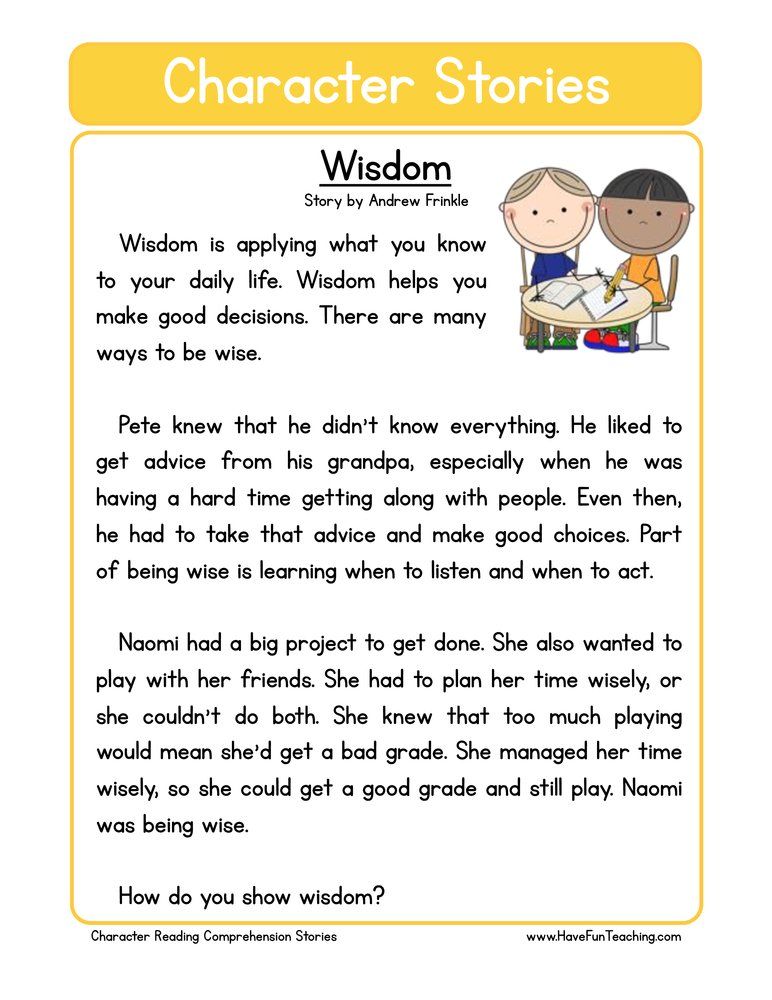
- There are other mushrooms in the world! Microscopic! Unpretentious! And which you can grow right at home, at any time of the year! - said the owl. You almost already know them.
- What are they called? the hedgehog and the squirrel asked in unison.
- Yeast! They are of different types: for making bread - bakery, beer - beer, but to get fodder protein - food for us, fodder yeast is used. A familiar owl sent them to me that year. - answered the owl.
- Why are we growing fodder yeast? the hedgehog asked.
- But, for example, for baking yeast bread, in addition to baker's yeast, you also need at least flour, sugar and salt. Do we have them now? the owl replied.
- Yes, indeed, no. - the hedgehog answered sadly.
- What do these fodder yeast eat then? What do you need to grow them? - the squirrel quickly responded.
- We will grow them right in the glass jars that the animals found when they were cleaning the forest from debris. And their food will be a solution of specially processed wood chips, which is full in the forest! the owl answered proudly.
And their food will be a solution of specially processed wood chips, which is full in the forest! the owl answered proudly.
- Hooray! now we will be full! The animals called loudly.
- Yes, but you also need to somehow separate (filter) the yeast from the solution in which they will grow, haven't you thought about it? the owl continued.
- Oh! Exactly ... - the squirrel said drawled.
- And I will ask the spider to weave such a web that it will retain the yeast and let the solution through! - said the hedgehog.
- Wow! But the idea! the owl replied cheerfully.
A few days later, the animals have mastered this environmentally friendly and very economical (budget) option for getting food at home at any time of the year. The fodder yeast grew "by leaps and bounds", they were very satisfying, and now both hibernation for the hedgehog and cold winter for the squirrel were not at all scary! And they also treated everyone in the forest with fodder yeast, and at the same time they found new friends and buddies!
13 interesting educational and popular science books for children
If your child is 10 years old, then it's time to try to determine the scope of his interests. It is the job of a parent to help by offering books that seriously explore or talk about some area of knowledge. We have selected for you the most interesting, beautiful and exciting books to start with.
It is the job of a parent to help by offering books that seriously explore or talk about some area of knowledge. We have selected for you the most interesting, beautiful and exciting books to start with.
1. “Mathematics. History of ideas and discoveries. Iosif Rybakov, Maria Astrina
To: a child with an interest in mathematics or an inquisitive child who is interested in everything.
Russia is known in the world as a country with a high level of teaching mathematics. If your child has an initial interest in the subject, then the book will help develop it. Forget about the math of counting when a car overtakes a train and one pedestrian over another, and discover a field of knowledge that solves the truly inspiring and beautiful problems of humanity.
This book will help you understand why mathematics is the queen of all sciences. Iosif Rybakov wrote, and Natalya Yasina drew the history of the development of human thought. Here you can see the beauty of numbers: from the circumference to the number π, from Pythagorean triplets to Fermat's theorem, from the law of universal gravitation to the theory of relativity, from Euclid's axioms to Riemann's multidimensional spaces.
2. “Live mathematics. Entertaining tasks for inquisitive minds. Yakov Perelman
To: per child. Try to solve problems with him, it's fun and useful. And nothing complicated
Why to read: A classic Russian children's popular science book about what it means to captivate with mathematics. No special knowledge and advanced skills like 14 ways to solve equations with two unknowns are required. You need knowledge of arithmetic and elementary ideas about geometry.
The book consists of what are called entertaining problems. Logic, wit, ingenuity and only half an hour on a day off - and perhaps you will succeed, because mathematics is so interesting! Unless, of course, tasks, puzzles and rebuses are interesting. You are waiting for: problems about squirrels, pioneers who counted passers-by on the street, a communal kitchen, pilots, a grandfather and a hit of the 20th century, problems with matches.
“This morning I played hide-and-seek with a squirrel,” said one of those gathered at the table of the rest house during breakfast. - Do you know in our forest a round clearing with a lonely birch in the middle? Behind this tree, the squirrel was hiding from me. Coming out of the thicket into the clearing, I immediately noticed a squirrel face with lively eyes, staring at me from behind the trunk. Cautiously, not approaching, I began to go around the edge of the clearing to look at the animal. Four times I walked around the tree - but the cheat retreated along the trunk in the opposite direction, still showing only its muzzle. So I didn’t manage to get around the squirrels.
- Do you know in our forest a round clearing with a lonely birch in the middle? Behind this tree, the squirrel was hiding from me. Coming out of the thicket into the clearing, I immediately noticed a squirrel face with lively eyes, staring at me from behind the trunk. Cautiously, not approaching, I began to go around the edge of the clearing to look at the animal. Four times I walked around the tree - but the cheat retreated along the trunk in the opposite direction, still showing only its muzzle. So I didn’t manage to get around the squirrels.
“However,” someone objected, “you yourself say that you walked around the tree four times.
- Around the tree, but not around the squirrel.
— But is there a squirrel on the tree?
3. Three days in Karlikania. Vladimir Levshin
To: children who like the humanitarian approach. If you think that "mathematics is not for my child", then perhaps you just haven't tried Levshin yet.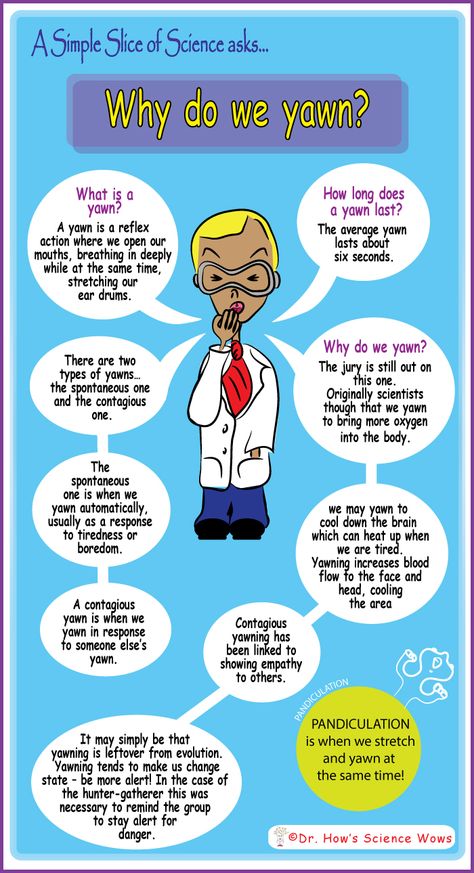
Fairy tale mathematics. Books by Vladimir Levshin are also classics of Soviet cognitive literature, the same mathematics in a playful form that is talked about a lot. "Three Days in Dwarf" and "The Black Mask of Al-Jebra" are adventure stories disguised as, as my son used to say, a mathematics textbook.
Nulik's adventures await you in the country of numbers, where there are no soaps or toothbrushes, and people drink ink for breakfast instead of tea and cocoa. Together with Nulik, you will learn how Arabic and Roman numerals differ, how they considered in Ancient Egypt and how to split numbers that are not divisible by each other.
4. "Entertaining physics". Yakov Perelman
To: to any inquisitive child, especially why.
Eternal hit. Stories from fantasy stories, incredible cases and their explanations - that's what this book is all about. It will help to understand that the things that the child is already used to: the light of the sun, the sounds of car horns are phenomena from the field of science that can be interesting to talk about, which means science is crazy how interesting, and physics is the main thing that explains the world .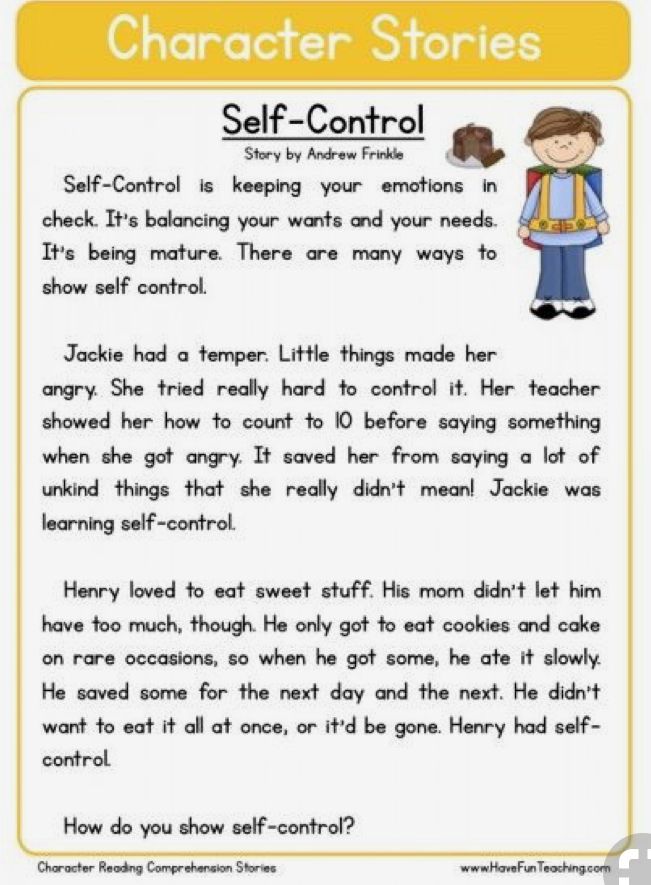
5. "That's how I see it." Roman Romanishin, Andrey Lesiv
To: for a child with an interest in physics. And design!
And this is the latest approach to a scientific and educational book. A modern translated (and extraordinarily beautiful) edition in the now accepted interdisciplinary manner tells about optical laws and illusions, the structure of the eye and Braille.
6. "Programming for kids"
To: a child who wants to program - from Lego to ships plowing the universe.
Here is an incredibly useful book. In an easy and understandable language, she tells and shows how to learn programming - and not on matches, but for real. There are websites, tasks, exercises and their consistent analysis and explanations.
It all starts with Scratch, a children's programming language developed at MTI specifically for children. The book will teach how to work in the sandbox (online depository for children) of Scratch, where the child will be able to compose algorithms as puzzles according to the wiziwig principle and gradually learn to understand the structure of algorithm commands, what a decision tree is and how mathematical logic is arranged, which underlies programming.
In general, everything is like that of adults in their adult deposits, only cool, beautiful and interesting. Scratch has a Russian interface and group work capabilities. For example, a child will be able to program his online little animal to enter the general chat of the international scratch depository, take off his hat and say: hello, I'm Vasya from Russia! Finally, some Python.
7. “Architecture through the eyes of a dove”. Krap Lee Feathertail
To: Aspiring designer or architect.
When else will you get a chance to read a book written by a dove? Krap Feathertail is the name of the author of the book, and as you guessed it, he is a dove flying around world capitals. He talks about the architecture seen in them - about Big Ben and the Moscow State University building, the Great Wall of China and the Colosseum, the Pyramid of Cheops and the Sagrada Familia in Barcelona. Very beautiful pictures, basic knowledge of the structure and architectonics of buildings, a little about styles.
8. History of paintings for children. David Hockney
To: A novice artist, designer, architect or art critic and art historian is just right, but just an inquisitive teenager will come in handy to improve their erudition.
Cool and beautiful guide to the history of art and painting, captivatingly described. Carefully! It is addictive and makes you want to immediately run to the museum. What does a small twig of honeysuckle mean in the pictures of early Renaissance artists, what primitive draftsmen painted in the Lascaux Cave, and why Pollock is not Malevich.
9. Water. Laura Ertimo
To: curious children with natural science interests who have not decided on any field.
Incredibly beautiful blue book with amazing illustrations. Water as a phenomenon - physics, chemistry. Fluid interference and wave phenomena - waves, wind, ripples. Water as a nutrient medium in terms of biology and water spaces in geography.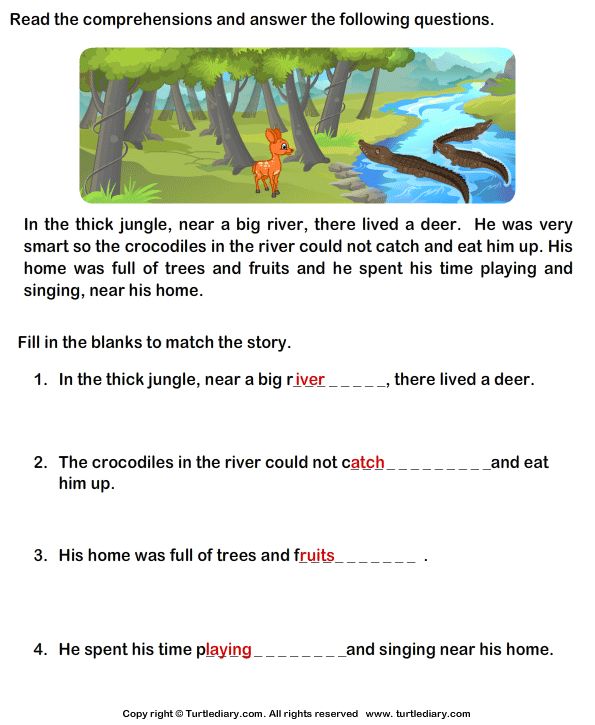 A multidisciplinary approach at its best.
A multidisciplinary approach at its best.
10. Silk Road. Peter Frankopan
To: A child with an interest in history, geography, travel, world politics and economics.
Interdisciplinary research devoted to unusual phenomena at the intersection of different sciences is in vogue today. Such is the children's edition of the bestseller of recent years - the book of the English professor and scientist Peter Frankopan "The Silk Road". It is dedicated to the history of the connection between East and West: in it the journey of Marco Polo, the heyday of the era of Genghis Khan, and the empire of Persia are presented not from the point of view of the Western world familiar to us, but in a completely new way, not Eurocentric. The book is full of amazing facts, it is beautiful, and it is a mixture of history, geography, anthropology, and the basics of world politics.
11. From dinosaur to compote. Scientists answer 100 plus 8 more questions about everything”
To: inquisitive why-do-guys aged 8 and over to find out what sciences are.
Why to read: A non-fiction book that is cool to read before going to bed, just like reading fairy tales in early childhood. What is the Bermuda Triangle? Why can't dragonflies be big? How much money is there in the world? Why is the car moving? Just a cool book, which can be the first children's non-fiction book in your library and will help form some kind of separate interest in the child.
12. Let's talk about space. Lena Nabokova
To: for everyone who loves adventure and travel. In addition, a child with an interest in astronomy - as the first book.
Incredibly beautiful book by the artist: real cosmogony and a lot of astronomy, astrophysics and the Universe, superbly drawn. The book has a plot: two friends travel around the planets and learn a lot of things along the way: how and why people study space, the Moon and the ISS, the solar system, the Milky Way, galaxies. What will happen to them? Read!
13.






